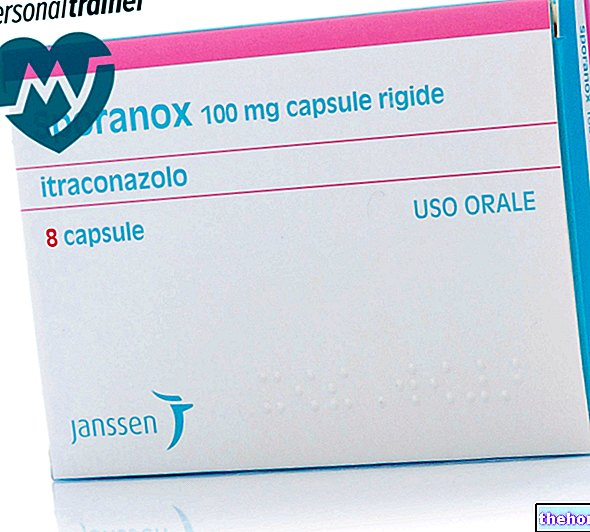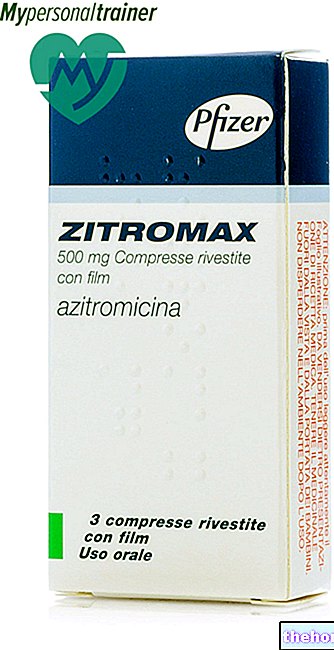Active ingredients: Levocetirizine (Levocetirizine dihydrochloride)
Xyzal 5 mg film-coated tablets
Xyzal package inserts are available for pack sizes:- Xyzal 5 mg film-coated tablets
- Xyzal 5 mg / ml oral drops, solution
- Xyzal 0.5 mg / ml oral solution
Why is Xyzal used? What is it for?
The active substance of Xyzal is levocetirizine dihydrochloride.
Xyzal is an antiallergic medicine.
For the treatment of the signs of the disease (symptoms) associated with:
- allergic rhinitis (including persistent allergic rhinitis);
- chronic urticaria (chronic idiopathic urticaria).
Contraindications When Xyzal should not be used
Do not take Xyzal
- if you are allergic (hypersensitive) to levocetirizine dihydrochloride or to an antihistamine or to any of the other ingredients of Xyzal (see 'What Xyzal contains').
- if you have severe renal impairment (severe renal insufficiency with creatinine clearance below 10 ml / min). .
Precautions for use What you need to know before taking Xyzal
Take special care with Xyzal
The use of Xyzal in children below 6 years of age is not recommended as the film-coated tablets do not allow for dose adjustment.
Ask your doctor for advice if you are likely to be unable to empty your bladder (in conditions such as: spinal cord injury or enlarged prostate).
Interactions Which drugs or foods can change the effect of Xyzal
Taking with other medicines
Tell your doctor or pharmacist if you are taking or have recently taken any other medicines, including medicines obtained without a prescription.
Taking Xyzal with food and drink
Caution is advised if Xyzal is taken with alcohol.
In sensitive patients, concomitant intake of cetirizine or levocetirizine and alcohol or other centrally acting substances may cause central nervous system effects, although it has been shown that the cetirizine racemic does not potentiate the effects of cetirizine. alcohol.
Warnings It is important to know that:
Pregnancy and breastfeeding
Ask your doctor or pharmacist for advice before taking any medicine. Tell your doctor if you are pregnant, trying to get pregnant or breastfeeding.
Driving and using machines
Some patients may experience drowsiness / drowsiness, tiredness and fatigue following treatment with Xyzal. Caution is advised when driving or operating machinery until you know the effect of this medicine on your person. Specific tests, conducted on healthy volunteers, however, have not revealed any reduction in alertness, ability to react or ability to cope. drive following the intake of levocetirizine at the recommended dosage.
Important information about some of the ingredients of Xyzal
The tablets contain lactose; if you have been told by your doctor that you have an "intolerance to some sugars, contact your doctor before taking this medicine.
Dose, Method and Time of Administration How to use Xyzal: Posology
Always take Xyzal exactly as your doctor has told you. If in doubt, consult your doctor or pharmacist.
Doses:
The usual dose for adults and children 6 years of age and older is one tablet per day.
Special dose instructions for specific populations:
Patients with impaired renal function may be given a lower dose according to the severity of their kidney disease and in children the dose will be chosen on the basis of body weight; the dose will be determined by your doctor.
Patients who have severe renal impairment should not take Xyzal.
Patients who only have impaired liver function should take the usual prescribed dose.
Patients who have both reduced liver and kidney function may be given a lower dose in relation to the severity of the kidney disease and, in children, the dose will also be chosen on the basis of body weight; the dose will be determined by your doctor.
Xyzal tablets are not recommended for children under 6 years of age.
No dose adjustment is necessary in elderly patients as long as their renal function is normal.
How and when should you take Xyzal?
The tablets should be swallowed whole with water and can be taken with or without food.
Overdose What to do if you have taken too much Xyzal
If you take more Xyzal than you should
Taking more Xyzal than necessary may cause drowsiness in adults. Children may initially show excitement and restlessness followed by sleepiness.
If you think you have taken too much Xyzal, tell your doctor, who will decide what actions need to be taken
If you forget to take Xyzal
If you forget to take Xyzal or take a lower dose than prescribed by your doctor, do not take a double dose to make up for a forgotten tablet; just wait until the scheduled time for the next dose and take your normal dose as prescribed by your doctor.
If you stop taking Xyzal
Stopping treatment is not expected to have any adverse effects. Symptoms may reappear, but should not be more severe than they were before treatment. If you have any further questions on the use of this medicine, ask your doctor or pharmacist.
Side Effects What are the side effects of Xyzal
Like all medicines, Xyzal can cause side effects, although not everybody gets them.
Common: may affect up to 1 in 10 patients
Dry mouth, headache, tiredness and sleepiness / drowsiness.
Uncommon: may affect up to 1 in 100 patients
Fatigue and abdominal pain.
Not known: frequency cannot be estimated from the available data
Other side effects have been reported such as palpitations, increased heart rate, convulsions, tingling, dizziness, syncope, tremor, dysgeusia (altered sense of taste), sensation of spinning or movement, visual disturbances, blurred vision, pain or difficulty in urinating. , inability to completely empty the bladder, edema, itching, rash, hives (swelling, redness and itching of the skin), rash, shortness of breath, weight gain, muscle pain, aggressive or agitated behavior, hallucination, depression, insomnia, worries or recurrent suicidal thoughts, hepatitis, abnormal liver function, vomiting, increased appetite and nausea.
Stop taking Xyzal at the first signs of a hypersensitivity reaction and contact your doctor immediately. Symptoms of the hypersensitivity reaction may include: swelling of the mouth, tongue, face and / or throat, difficulty breathing or swallowing ( chest tightness or wheezing) hives, sudden drop in blood pressure which can lead to collapse or shock, which can be fatal.
If any of the side effects gets serious, or if you notice any side effects not listed in this leaflet, please tell your doctor or pharmacist.
Expiry and Retention
Keep Xyzal out of the reach and sight of children.
Do not use Xyzal after the expiry date which is stated on the inner label and carton after EXP. The expiry date refers to the last day of that month.
This medicinal product does not require any special storage conditions
Composition and pharmaceutical form
What Xyzal contains
- The active substance is levocetirizine dihydrochloride 5 mg
Each film-coated tablet contains 5 mg of levocetirizine dihydrochloride.
- The other ingredients are microcrystalline cellulose, lactose monohydrate, anhydrous colloidal silica, magnesium stearate, hypromellose (E464), titanium dioxide (E171) and macrogol 400.
Description of what Xyzal looks like and contents of the pack
The film-coated tablets are white to off-white, oval, with a Y logo on one side. They are supplied in blisters of 1, 2, 4, 5, 7, 10, 2 x 10, 10 x 10, 14, 15, 20, 21, 28, 30, 40, 50, 60, 70, 90 and 100 tablets. . Not all pack sizes may be marketed. Source Package Leaflet: AIFA (Italian Medicines Agency). Content published in January 2016. The information present may not be up-to-date.
To have access to the most up-to-date version, it is advisable to access the AIFA (Italian Medicines Agency) website. Disclaimer and useful information.
01.0 NAME OF THE MEDICINAL PRODUCT
XYZAL
02.0 QUALITATIVE AND QUANTITATIVE COMPOSITION
Each film-coated tablet contains 5 mg of levocetirizine dihydrochloride.
Excipients: 63.50 mg lactose monohydrate / tablet
For the full list of excipients, see section 6.1.
03.0 PHARMACEUTICAL FORM
Film-coated tablet.
White to off-white, oval film-coated tablet with a Y logo on one side.
04.0 CLINICAL INFORMATION
04.1 Therapeutic indications
Symptomatic treatment of allergic rhinitis (including persistent allergic rhinitis) and chronic idiopathic urticaria.
04.2 Posology and method of administration
The tablets should be taken orally and swallowed whole with the help of a liquid. They can be taken with or without food. It is recommended that the daily dose be taken in a single dose.
Adults and adolescents from 12 years of age
The recommended daily dose is 5 mg (1 film-coated tablet).
Senior citizens
Dosage adjustment is recommended in elderly patients with moderate to severe renal impairment (see "Patients with renal impairment" below).
Children between 6 and 12 years of age
The recommended daily dose is 5 mg (1 film-coated tablet).
For children aged 2 to 6 years, dosage adjustment is not possible with the film-coated tablet formulation. The use of a pediatric formulation of levocetirizine is therefore recommended.
Patients with renal impairment
Frequency of dosing should be based on renal function. To adapt the dosage, refer to the table below. To use the table, reference should be made to the patient's creatinine clearance (CLcr) value in ml / min. The CLcr value (ml / min) can be derived from the serum creatinine level (mg / dl) according to the following formula:
Dosage adjustment for patients with renal impairment:
In pediatric patients with renal impairment, the dose will need to be adjusted individually, taking into account the renal clearance and the patient's body weight. There are no specific data for children with renal impairment.
Patients with hepatic impairment
No dosage adjustment is necessary in patients with hepatic impairment alone. In the case of patients with hepatic and renal impairment, it is necessary to adjust the dosage (see "Patients with renal impairment" above).
Duration of treatment
Intermittent allergic rhinitis (symptoms present for less than 4 days a week or lasting less than 4 weeks) must be treated in accordance with the disease and its history; the treatment can be stopped once the symptoms have disappeared and can be started again when the symptoms reappear. In case of persistent allergic rhinitis (symptoms present for more than 4 days a week and for more than 4 weeks), the patient can be offered continuous therapy during the period of exposure to allergens.
Clinical data on treatment for up to 6 months are currently available for levocetirizine 5 mg film-coated tablets. Clinical data on racemic treatment are available for up to one year in patients with chronic urticaria and chronic allergic rhinitis.
04.3 Contraindications
Hypersensitivity to levocetirizine, to other piperazine derivatives, or to any of the excipients.
Levocetirizine is contraindicated in patients with severe renal impairment, with creatinine clearance less than 10 ml / min.
Patients with rare hereditary problems of galactose intolerance, the Lapp lactase deficiency or glucose-galactose malabsorption should not take this medicine.
04.4 Special warnings and appropriate precautions for use
The use of the film-coated tablet formulation in children under the age of six is not recommended as this formulation does not allow for appropriate dosage adjustment. It is recommended that a pediatric formulation of levocetirizine be used.
Administration of levocetirizine to infants and children under 2 years of age is not recommended.
Caution is advised in alcohol intake (see "Interactions").
04.5 Interactions with other medicinal products and other forms of interaction
No interaction studies have been performed with levocetirizine (including studies with CYP3A4 inducers); studies performed with the racemic cetirizine demonstrated the absence of clinically relevant adverse interactions (with pseudoephedrine, cimetidine, ketoconazole, erythromycin, azithromycin, glipizide and diazepam). In a repeat dose study with theophylline (400 mg once per day), a slight decrease in cetirizine clearance (16%) was observed, while theophylline availability was not affected by concomitant administration of cetirizine.
The presence of food does not reduce the extent of levocetirizine absorption, although it does decrease its rate.
In sensitive patients, concomitant intake of cetirizine or levocetirizine and alcohol or other CNS sedative agents may cause central nervous system effects, although the racemic cetirizine has been shown not to potentiate the effects of CNS. alcohol.
04.6 Pregnancy and breastfeeding
For levocetirizine, no clinical data on exposed pregnancies are available.
Animal studies do not indicate direct or indirect harmful effects on pregnancy, embryonal / fetal development, parturition or postnatal development.
Caution should be exercised when prescribing the medicinal product to pregnant or breastfeeding women.
04.7 Effects on ability to drive and use machines
Comparative clinical studies have found no evidence that levocetirizine, at the recommended dose, reduces alertness, responsiveness or the ability to drive.
However, some patients may experience somnolence, fatigue and asthenia during levocetirizine therapy. Therefore patients who are required to drive, engage in potentially hazardous activities or operate machinery should keep in mind the individual response to the medicine.
04.8 Undesirable effects
During the therapeutic activity studies, carried out on men and women aged 12 to 71 years, 15.1% of patients treated with 5 mg levocetirizine experienced at least one adverse drug reaction, compared with 11.3%. in the placebo group of patients In 91.6% of cases, adverse reactions were mild to moderate.
In clinical trials, the proportion of patients who had to discontinue treatment due to adverse reactions was 1.0% (9/935) with 5 mg levocetirizine and 1.8% (14/771) with placebo.
Clinical therapeutic trials with levocetirizine involved 935 subjects exposed to the drug at the recommended dose of 5 mg per day. The following is the incidence of adverse drug reactions found in these patients with a percentage equal to or greater than 1% (common:> 1/100,
Other uncommon adverse reactions have been observed (uncommon:> 1/1000, abdominal pain.
The incidence of sedative adverse drug reactions such as somnolence, fatigue and asthenia was overall more common (8.1%) following treatment with 5 mg levocetirizine than with placebo (3.1%).
In addition to the adverse reactions from clinical trials and listed above, very rare cases of adverse drug reactions have been reported in post marketing experience, listed below.
Immune system disorders: hypersensitivity including anaphylaxis.
Psychiatric disorders: aggression, agitation.
Nervous system disorders: convulsions.
Eye disorders: visual disturbances.
Cardiac disorders: palpitations.
Respiratory, thoracic and mediastinal disorders: dyspnoea.
Gastrointestinal disorders: nausea.
Hepatobiliary disorders: hepatitis.
Skin and subcutaneous tissue disorders: angioneurotic edema, fixed drug eruption, pruritus, rash, urticaria.
Musculoskeletal and connective tissue disorders: myalgia.
Investigations: weight gain, abnormal liver function tests.
04.9 Overdose
Symptoms
Symptoms of overdose may include drowsiness in adults and initially agitation and restlessness, followed by somnolence in children.
Treatment of overdose
There is no known specific antidote to levocetirizine.
In the event of an overdose, symptomatic or supportive treatment is recommended. Gastric lavage should be considered if a short time has passed since ingestion. Hemodialysis is not effective in eliminating levocetirizine.
05.0 PHARMACOLOGICAL PROPERTIES
05.1 Pharmacodynamic properties
Pharmacotherapeutic group: antihistamines for systemic use, piperazine derivative, ATC code: R06A E09
Levocetirizine, the (R) enantiomer of cetirizine, is a potent and selective antagonist of peripheral H1 receptors.
Binding studies indicated that levocetirizine has a high affinity for human H1 receptors (Ki = 3.2 nmol / l). The affinity of levocetirizine is double that of cetirizine (Ki = 6.3 nmol / l). Levocetirizine dissociates from H1 receptors with a half-life of 115 ± 38 min.
Following a single administration, levocetirizine demonstrates a receptor occupation of 90% at 4 hours and 57% at 24 hours.
Pharmacodynamic studies conducted in healthy volunteers have shown that levocetirizine exerts "activity comparable to cetirizine in the skin and nose, but at a halved dosage.
The pharmacodynamic activity of levocetirizine was studied in randomized controlled trials: in a study comparing the effects of levocetirizine 5 mg, desloratadine 5 mg and placebo on histamine-induced wheals and erythema, treatment with levocetirizine, compared with placebo and desloratadine, resulted in a significant reduction in the formation of wheals and erythema, which was highest in the first 12 hours and lasted for 24 hours (p
The onset of action of 5 mg levocetirizine in controlling pollen-induced symptoms was observed 1 hour after drug intake in placebo-controlled trials in the allergen stimulation chamber model.
In vitro studies (Boyden chamber and cell layer techniques) have shown that levocetirizine inhibits eotaxin-induced transendothelial migration of eosinophils in both dermis and lung tissue. In an experimental pharmacodynamic study in vivo (skin chamber technique) in 14 adult patients, during the first 6 hours of the pollen-induced reaction, three main inhibitory effects of levocetirizine 5 mg were shown in comparison with placebo: inhibition of VCAM-1 release, modulation of vascular permeability and reduced eosinophil recruitment.
The efficacy and safety of levocetirizine have been demonstrated in several double-blind, placebo-controlled clinical studies in adult patients with seasonal allergic rhinitis, perennial allergic rhinitis or persistent allergic rhinitis. Levocetirizine has been shown to significantly improve symptoms. allergic rhinitis, including nasal obstruction in some studies.
A 6-month clinical study involving 551 adult patients (including 276 patients treated with levocetirizine) suffering from persistent allergic rhinitis (symptoms present 4 days a week for at least 4 consecutive weeks) and sensitized to house dust mites and grass pollen, demonstrated that levocetirizine 5 mg was clinically and statistically significantly more potent than placebo in improving the total score of allergic rhinitis symptoms over the entire duration of the study, without any tachyphylaxis. Throughout the study, levocetirizine significantly improved the patients' quality of life.
The pediatric safety and efficacy of levocetirizine tablets was studied in two placebo-controlled clinical trials which included patients aged 6 to 12 years with seasonal and perennial allergic rhinitis, respectively. In both studies, levocetirizine has significantly improved symptoms and raised health-related quality of life.
In a placebo-controlled clinical trial including 166 patients with chronic idiopathic urticaria, 85 patients were treated with placebo and 81 patients with levocetirizine 5 mg once daily for 6 weeks. The result of levocetirizine treatment was a significant decrease in itch intensity during the first week and throughout the total treatment period compared to placebo. Levocetirizine also produced a significant improvement in related quality of life compared to placebo. health, assessed on the basis of the Dermatology Life Quality Index.
Pharmacokinetic / pharmacodynamic relationship
The action on histamine-induced skin reactions is not correlated with plasma concentrations.
ECG analysis revealed no noteworthy effects of levocetirizine on the QT interval.
05.2 Pharmacokinetic properties
The pharmacokinetics of levocetirizine are linear and independent of dose and time, with low inter-subject variability. The pharmacokinetic profile is the same when given as a single enantiomer or as cetirizine.
Chiral inversion does not occur during the absorption and elimination processes.
Absorption
Levocetirizine administered orally is rapidly and extensively absorbed. The peak plasma concentration is reached 0.9 hours after administration. Steady state levels are reached after two days of treatment. Following single or repeated administration of 5 mg once daily, peak concentrations of 270 ng / ml and 308 ng / ml respectively are achieved. The extent of absorption is not dose dependent and is not affected by food intake, but the peak concentration is reduced and delayed.
Distribution
There are no tissue distribution data in humans or regarding the passage of levocetirizine across the blood-brain barrier. In rats and dogs, the highest tissue levels were found in the liver and kidneys, the lowest in the CNS. Levocetirizine is 90% bound to plasma proteins The distribution of levocetirizine is limited, as indicated by the volume of distribution which is 0.4 l / kg.
Biotransformation
In humans, the extent of levocetirizine metabolism is less than 14% of the dose; therefore it is believed that the differences that may occur following genetic polymorphism or the concomitant intake of enzyme inhibitors are negligible. The metabolic pathways include aromatic oxidation, N- and O-dealkylation and conjugation with taurine. The dealkylation pathways are mediated mainly by CYP 3A4, while various and / or unidentified isoforms of CYP come into play for aromatic oxidation. . Levocetirizine does not modify the activity of CYP isoenzymes 1A2, 2C9, 2C19, 2D6, 2E1 and 3A4 at concentrations well above the maximum concentration reached after oral administration of 5 mg.
Therefore the poor metabolism and the absence of inhibitory potential on the metabolism, make the interaction of levocetirizine with other substances unlikely, or vice versa.
Elimination
The plasma half-life in adults was 7.9 ± 1.9 hours. The mean apparent total body clearance was 0.63 ml / min / kg. The major route of excretion of levocetirizine and metabolites is urinary, through which an average of 85.4% of the administered dose is eliminated. The mean faecal excretion was only 12.9% of the dose. Levocetirizine is excreted by both glomerular filtration and active tubular secretion.
Renal impairment
The apparent body clearance of levocetirizine correlates with creatinine clearance.
Therefore, it is recommended to modify the dose interval of levocetirizine, based on creatinine clearance, in patients with moderate or severe renal impairment. In subjects with end-stage renal insufficiency anuria, total body clearance is reduced by "About 80% compared to normal subjects. The amount of levocetirizine eliminated during a standard 4-hour hemodialysis course was less than 10%.
05.3 Preclinical safety data
Non-clinical data reveal no special hazard for humans based on conventional studies of safety pharmacology, repeated dose toxicity, genotoxicity, carcinogenic potential, reproductive toxicity.
06.0 PHARMACEUTICAL INFORMATION
06.1 Excipients
Nucleus
Microcrystalline cellulose
Lactose monohydrate
Anhydrous colloidal silica
Magnesium stearate
Coating
OpadryÒ Y-1-7000 consisting of:
Hypromellose (E464)
Titanium dioxide (E171)
Macrogol 400.
06.2 Incompatibility
Not relevant.
06.3 Period of validity
4 years.
06.4 Special precautions for storage
This medicine does not require any special storage conditions.
06.5 Nature of the immediate packaging and contents of the package
Aluminum blister - OPA / Aluminum / PVC
Packs of 1, 2, 4, 5, 7, 10, 2 x 10, 10 x 10, 14, 15, 20, 21, 28, 30, 40, 50, 60, 70, 90, 100 tablets.
Not all pack sizes may be marketed.
06.6 Instructions for use and handling
No special instructions.
07.0 MARKETING AUTHORIZATION HOLDER
UCB Pharma S.p.A.
Via Gadames 57,
20151 Milan
08.0 MARKETING AUTHORIZATION NUMBER
AIC n. 035666229 / M - pack of 1 tablet
AIC n. 035666231 / M - pack of 2 tablets
AIC n. 035666015 / M - pack of 4 tablets
AIC n. 035666243 / M - pack of 5 tablets
AIC n. 035666027 / M - pack of 7 tablets
AIC n. 035666039 / M - pack of 10 tablets
AIC n. 035666041 / M - pack of 2 X 10 tablets
AIC n. 035666054 / M - pack of 10 X 10 tablets
AIC n. 035666066 / M - pack of 14 tablets
AIC n. 035666078 / M - pack of 15 tablets
AIC n. 035666080 / M - pack of 20 tablets
AIC n. 035666092 / M - pack of 21 tablets
AIC n. 035666104 / M - pack of 28 tablets
AIC n. 035666116 / M - pack of 30 tablets
AIC n. 035666128 / M - pack of 40 tablets
AIC n. 035666130 / M - box of 50 tablets
AIC n. 035666142 / M - pack of 60 tablets
AIC n. 035666155 / M - pack of 70 tablets
AIC n. 035666167 / M - pack of 90 tablets
AIC n. 035666179 / M - pack of 100 tablets
09.0 DATE OF FIRST AUTHORIZATION OR RENEWAL OF THE AUTHORIZATION
May 27, 2003
Renewal: February 2006
10.0 DATE OF REVISION OF THE TEXT
02/10/2010




























